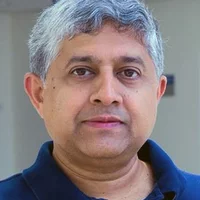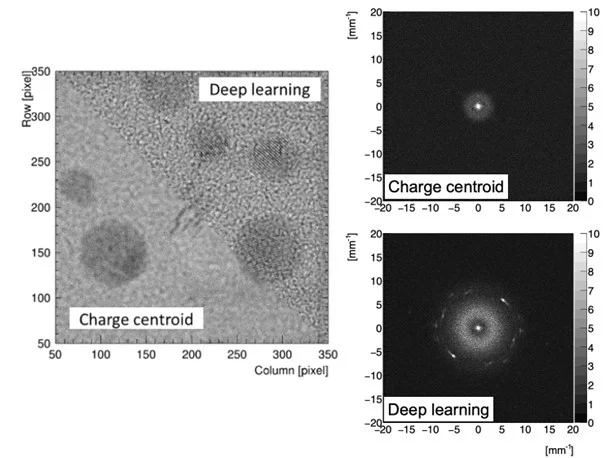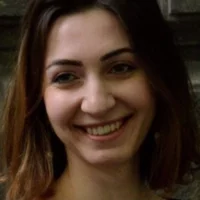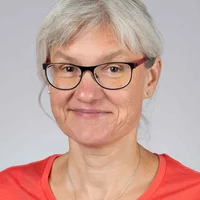Our Research
The research of our group focuses on the development and implementation of new methods in the field of electron microscopy, which contributes to expand the capabilities at the electron microscopy facility (EMF). Much of our work profits from very fruitful collaborations with academic colleagues as well as with companies. Main topics have been
1) (S)TEM-imaging techniques for variety of radiation hard as well as beam sensitive materials and
2) optimized specimen preparation combined with electron microscopy imaging techniques complementing synchrotron applications at room temperature as well as under cryogenic conditions.
Our group is also responsible for running the electron microscopy facility electron microscopy facility (EMF) at PSI.
Research topics and highlights:
Optimized specimen preparation and ground truth provided from TEM methods contributing to resolution record of 4.2nm of burst ptychographic X-ray tomography
The on-going drive to shrink transistors in microelectronics demands incredibly high-resolution chip inspection. While X-rays offer crucial deep penetration for non-destructive imaging of integrated circuits, achieving nanoscale resolution in X-ray nanotomography has been hindered by mechanical instabilities.
Our group has been involved in ground-breaking research of achieving nanoscale resolution in X-ray ptychographic tomography. We prepared the specialized pillar samples using FIB/SEM, which were fundamental for the success of the project. This meticulous sample preparation, combined with our collaborators' innovative burst ptychography concept, led to an unprecedented isotropic 3D resolution of 4.2 nm for a 7 nm node integrated circuit.
High-resolution Scanning Transmission Electron Microscopy (STEM) finally provided crucial validation of these ground-breaking X-ray data. Through Energy Dispersive X-ray Spectroscopy (EDX), we also independently verified the sample's chemical composition, offering essential insights that confirmed the reliability and comprehensive understanding of these advanced microchip structures. Our work in sample preparation and electron microscopy was indispensable in pushing the boundaries of non-destructive chip analysis.
Reference:
High-performance 4-nm-resolution X-ray tomography using burst ptychography. Tomas Aidukas, Nicholas W. Phillips, Ana Diaz, Emiliya Poghosyan, Elisabeth Müller, A. F. J. Levi, Gabriel Aeppli, Manuel Guizar-Sicairos & Mirko Holler, 2024, Nature 632(8023):81-88 DOI: 10.1038/s41586-024-07615-6
Live 4D STEM imaging on our probe-corrected JEM ARM-200F (JEOL)
Our group has a long-standing collaboration with Dectris, which led to our involvement in the early tests of their cutting-edge ARINA hybrid pixel detector. As part of this work, and alongside our colleagues from the Ernst Ruska Microscopy Centre, we successfully tested and implemented on-the-fly image reconstruction for 4D-STEM and electron ptychography.
Reference:
Alexander Clausen , Dieter Weber , Elisabeth Mueller , Emiliya Poghosyan , Daniel Stroppa , Rafal Dunin-Burkowski, Live Data Processing of 4D STEM Experiments: LiberTEM Meets ARINA Hybrid-Pixel Detector, Microscopy and Microanalysis, Volume 29, Issue Supplement_1, 1 August 2023, Page 293, https://doi.org/10.1093/micmic/ozad067.135
Subpixel resolution of a hybrid pixel detector through deep learning
In collaboration with the CPS detector group, and SDSC hub at PSI, we have developed machine learning based algorithms which together with novel strategies to achieve/provide experimental training data allowed to enhance the spatial resolution of hybrid pixel detectors for low dose TEM applications to subpixel resolution.
Reference:
Xie, … Müller, Poghosyan, Remlinger, Enhancing spatial resolution in Mönch for electron microscopy via deep learning, Journal of Instrumentation 2024, volume 19, https://doi.org/10.1088/1748-0221/19/01/C01020
Group members:
Former group members:
Xiangyu Xie (Postdoc)
Marqueta Galikova (visiting PhD student)
Simone Anghileri (physics apprentice)
Mauro Schaufelbühl (physics apprentice)
Michal Jambor (visiting scientist)






